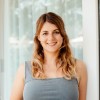Flatiron Research Fellow, Structural & Molecular Biophysics and Biomolecular Design, Center for Computational Biology presso Simons Foundation
Simons Foundation · New York City, Stati Uniti d'America · Onsite
- Junior
- Ufficio in New York City
The Center for Computational Biology (CCB) of the Simons Foundation’s Flatiron Institute is actively seeking enthusiastic, full-time post-doctoral Flatiron Research Fellows to join its Structural & Molecular Biophysics and Biomolecular Design groups for a joint appointment in 2026, as part of the Molecular Ensemble Sampling and Simulation (MESS) collaboration.
The goal at CCB is to advance the understanding of fundamental and historically challenging biological processes by developing theory, innovative modeling tools for large-scale biophysical simulations, and computational frameworks for analyzing increasingly large and complex experimental datasets. Living systems are built hierarchically; as such, CCB’s research activities span several scales of biological organization, bridging the gap between microscopic detail and large-scale behaviors, and providing natural continuity between our groups’ efforts. CCB currently comprises more than 45 research and data scientists at career stages from recent Ph.D. graduates through senior scientists, as well as visiting scientists, guest researchers, graduate students, interns, and administrative support staff. For a full description of CCB research areas and scientific staff, please see our website.
The Structural & Molecular Biophysics group uses long timescale molecular dynamics (MD) simulations, integrated with experimental observables (especially cryo-electron microscopy data), and machine learning tools to better capture the dynamics of biological macromolecules and to understand their function. Complementing this work, the Biomolecular Design group applies the current understanding of the theory of protein folding and function to design new, synthetic heteropolymers, built from exotic chemical building blocks, which fold into new structures inaccessible to natural proteins, and which perform new functions. In addition to giving rise to useful new molecules that can serve as drugs, nanomaterials, or catalysts, this also serves as the ultimate test of our understanding of protein folding.
Together through the Molecular Ensemble Sampling and Simulation (MESS) collaboration, the groups are working together to advance computational methods for the design and understanding of molecular motion, and addressing current obstacles to accuracy and tractability. The successful candidate will carry out a research project to advance these goals. Particular foci include 1) engineering open-source software infrastructure to facilitate analysis of macromolecular motion and design of motile macromolecules, 2) integration of physics-based simulation and machine learning methods, 3) development of enhanced approximation methods (implicit solvation, coarse-graining, etc.) to improve the tractability of currently expensive calculations, 4) the incorporation of molecular design tools to interpret cryo-EM data, or 5) the design of molecules of potential medical interest.
Strong applicants with backgrounds in computational biology/biochemistry/biophysics, applied and computational mathematics, computer science/engineering, machine learning, and related fields are particularly encouraged to apply.
POSITION DESCRIPTION
Flatiron Research Fellows in CCB are individuals at the postdoctoral level with backgrounds in one or more of the following areas: applied mathematics, statistics, computational biology, biophysics, computer science, engineering, mathematical physics, or related disciplines.
Fellows are expected to carry out an active research program that can be independently directed and/or involve substantial collaboration with other members of CCB or the Flatiron Institute. In addition to their research, Fellows help build the rich scientific community at CCB and the Flatiron Institute by participating in seminars, colloquia, and group meetings; developing their software, mathematical and computational expertise through internal education opportunities; and sharing their knowledge through scientific publications, presentations, and/or software releases, with the financial support of the Institute. Fellows have access to the Flatiron Institute’s powerful scientific computing resources.
Responsibilities include but are not limited to:
- Performing theoretical and computational research
- Developing, implementing and maintaining scientific software
- Participating in the organization of CCB and Flatiron-wide collaborative activities including seminars, workshops and meetings
- Participating in the preparation of manuscripts for publication and of presentations at scientific conferences
- Assisting in student mentorship
- Sharing expertise and providing training and guidance to CCB staff and visitors as needed.
FRF positions are generally two-year appointments that can be renewed for a third year, contingent on performance. Fellows will be based, and have a principal office or workspace, at the Simons Foundation’s offices in New York City. Fellows may also be eligible for subsidized housing within walking distance of the Flatiron Institute.
For more information about careers at the Flatiron Institute, please click here.
Education
Ph.D. in a relevant field (applied mathematics, statistics, computational biology, biophysics, computer science, engineering, mathematical physics, or related disciplines)
Related Skills & Other Requirements
- Demonstrated abilities in mathematical modeling, analysis and/or scientific computation, scientific software and algorithm development, data analysis and inference, and image analysis
- Ability to do original and outstanding research in computational biology, and expertise in computational methods, data analysis, software and algorithm development, modeling machine learning, and scientific simulation
- Ability to work well in an interdisciplinary environment, and to collaborate with experimentalists
- Strong oral and written communication, data documentation, and presentation skills
COMPENSATION AND BENEFITS
- The full-time annual compensation for this position is $91,000.
- In addition to competitive salaries, the Simons Foundation provides employees with an outstanding benefits package.
To apply, please submit the following via the application portal:
- Cover Letter, which should include a summary of applicants’ most significant contributions in graduate school
- Curriculum vitae with publications list and, if relevant, links to software
- Research statement of no more than three (3) pages describing the applicant’s past important results, current and future research interests which may include both scientific topics and algorithm and software development, and potential synergies with activities at CCB
- Two (2) letters of recommendation
Applications for available positions that begin in 2025 will generally be reviewed beginning November 2025, and will be considered on a rolling basis until the positions are filled. For full consideration, candidates are strongly encouraged to submit their complete application by November 30, 2025.
SELECTION CRITERIA
Applications will be evaluated based on:
- Past research accomplishments
- The proposed research program
- The synergy of applicant’s expertise and research proposal topic with existing CCB staff and research programs, and potential to cross boundaries between CCB groups and/or the Flatiron Institute’s other research centers that are part of the MESS collaboration.
Any queries about the application process or about CCB should be directed to [email protected]. Queries about CCB may also be directed to scientific staff at CCB.
Candidarsi ora





